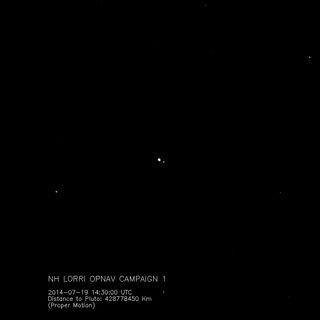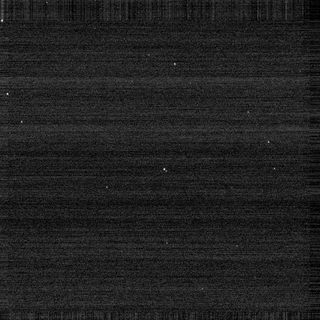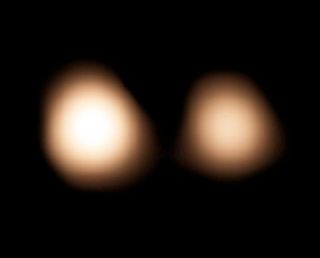A NASA spacecraft hurtling toward a 2015 rendezvous with Pluto has captured an amazing video of the dwarf planet and its largest moon, Charon.

The New Horizons probe used its onboard telescope to record a video of Charon and Pluto locked in their orbital dance. The movie is composed of 12 individual images taken from July 19 through July 24 — almost exactly one year before the spacecraft's flyby of the distant dwarf planet, which is scheduled for July 14, 2015.
"The image sequence showing Charon revolving around Pluto set a record for close-range imaging of Pluto — they were taken from 10 times closer to the planet than the Earth is," New Horizons principal investigator Alan Stern, of the Southwest Research Institute in Boulder, Colorado, said in a statement. "But we'll smash that record again and again, starting in January, as approach operations begin." [New Horizons' Flight to Pluto in Pictures]
"We are really excited to see our target and its biggest satellite in motion from our own perch, less than a year from the historic encounter ahead!" he added.
New Horizons was about 265 million miles (426 million kilometers) from Pluto when it took the 12 photos, researchers said.

At 750 miles (1,200 km) across, Charon is by far the largest of Pluto's five known moons; in fact, it's more than half as wide as Pluto itself. Charon orbits just 11,200 miles (18,000 km) above the dwarf planet's surface. For comparison, Earth's moon lies an average of 239,000 miles (385,000 km) away from us.
Because of their close proximity, Pluto and Charon orbit a central gravity point, known as a barycenter, that is located between the two binary objects. The new video released by the New Horizons science team is centered on that barycentric point.
Get the Space.com Newsletter
Breaking space news, the latest updates on rocket launches, skywatching events and more!
The New Horizons team released the new video late last week, just a few days after other spectacular Pluto and Charon imagery from the ALMA radio observatory in Chile came out.
ALMA, whose name is short for Atacama Large Millimeter/submillimeter Array, took the photos to help guide New Horizons' journey to the Pluto system, which lies about 40 times farther from the sun than Earth does.

ALMA's observations are helping pinpoint Pluto's position and path around the sun, which to this day are imperfectly known, researchers said. The knowledge gap isn't terribly surprising, considering the dwarf planet has been observed for just one-third of an orbit to date. (Pluto takes 248 years to complete one lap around the sun and was just discovered in 1930.)
The ALMA team first observed Pluto and Charon in November 2013, then did so again once in April 2014 and twice this past July. More observations are planned for October, researchers said.
New Horizons is about to get a deep-space break. The probe's handlers plan to put it into hibernation on Aug. 29, just four days after New Horizons crosses the orbit of Neptune. They'll wake the spacecraft on Dec. 6 to get ready for the flyby, researchers said.
Follow Mike Wall on Twitter @michaeldwall and Google+. Follow us @Spacedotcom, Facebook or Google+. Originally published on Space.com.
Join our Space Forums to keep talking space on the latest missions, night sky and more! And if you have a news tip, correction or comment, let us know at: community@space.com.

Michael Wall is a Senior Space Writer with Space.com and joined the team in 2010. He primarily covers exoplanets, spaceflight and military space, but has been known to dabble in the space art beat. His book about the search for alien life, "Out There," was published on Nov. 13, 2018. Before becoming a science writer, Michael worked as a herpetologist and wildlife biologist. He has a Ph.D. in evolutionary biology from the University of Sydney, Australia, a bachelor's degree from the University of Arizona, and a graduate certificate in science writing from the University of California, Santa Cruz. To find out what his latest project is, you can follow Michael on Twitter.